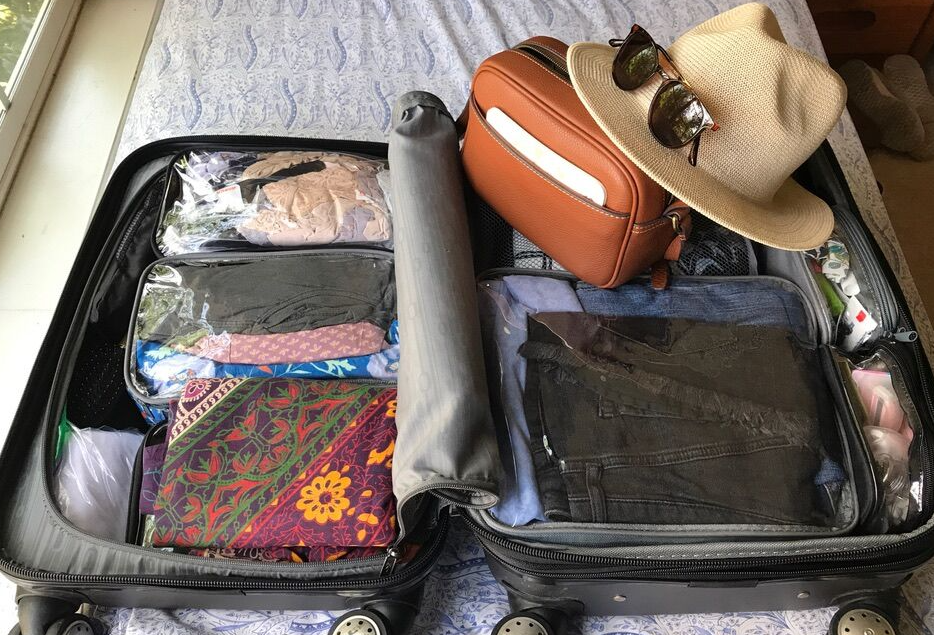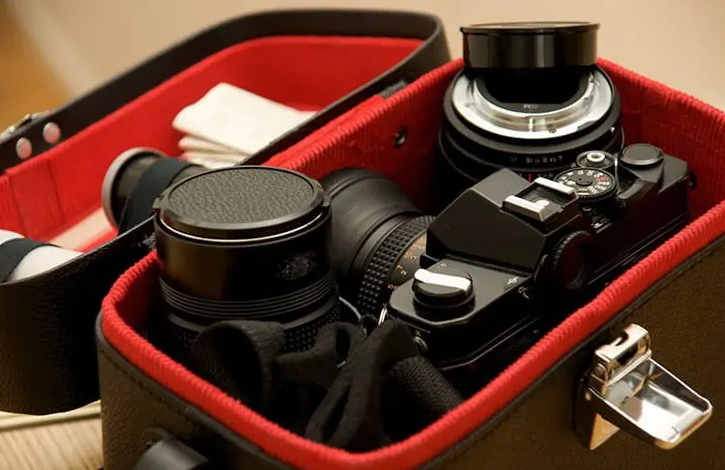Start by cleaning the case, assess its compartments, gather packing supplies, and use techniques like layering or rolling to maximize space and organization.
Table of Contents
Preparation Before Packing
Cleaning the Case
First things first: make sure the hard shell case is clean. Remove any old tags, stickers, or remnants from past trips. Use a damp cloth to wipe the interior and exterior of the case. For stubborn stains or scuffs, you might consider using a specialized cleaning solution compatible with the material of your case.
Why It’s Important
- Hygiene: A clean case is a healthy case.
- Optimal Storage: Dirt and debris can take up space and potentially damage your belongings.

Assessing Storage Compartments
Next, examine the various storage compartments within your hard shell case. Identify pockets, zippers, and any built-in compartments that can hold specific items.
Organizing Your Space
- Main Compartment: This is where clothes and large items go.
- Smaller Pockets: Ideal for toiletries, electronics, and travel documents.
- Hidden Pockets: Perfect for valuable items like passports and jewelry.
Gathering Packing Supplies
List of Packing Supplies
- Packing Cubes: These help segregate items and make use of space efficiently.
- Sealable Plastic Bags: Useful for liquids or items that might leak.
- Travel Organizers: For keeping electronics and cords untangled.
Where to Buy
- Local department stores
- Travel specialty shops
Packing Techniques
Packing is an art as much as it is a science. With a variety of techniques at your disposal, knowing how to pack effectively can significantly impact your travel experience. Here, we’ll explore different methods tailored for hard shell cases to make your journey smoother.
The Layering Method
The layering method is best suited for travelers who prefer a highly organized suitcase. It involves placing items in layers, usually starting with heavy, flat items at the bottom and progressing to lighter, more flexible items at the top.
Steps for Layering
- Place shoes and heavy items at the bottom.
- Next, layer pants and other flat garments.
- Finally, place lighter items like t-shirts and underwear on top.
Advantages
- Easy to locate items.
- Efficient use of space.
The Roll-up Method
For those who want to maximize space and don’t mind a little disorganization, the roll-up method is for you. This technique involves rolling clothes into tight cylinders, making them easier to stack.
Steps for Rolling
- Fold clothes in half lengthwise.
- Roll tightly from the bottom up.
Advantages
- Maximizes space.
- Reduces wrinkles in certain types of fabric.
Utilizing Space Efficiently
Whether you’re a frequent flyer or a first-timer, making the most of your luggage space is crucial. Hard shell cases often feature less external storage, so using the internal space efficiently is vital.
Strategies for Space Utilization
- Use the corners and edges for small items like socks and accessories.
- Consider using compression bags for bulky items like winter coats.
- Utilize empty spaces within shoes for storing small items like chargers or socks.
Additional Tips
- Keep a small bag for laundry to separate clean and dirty clothes.
- Make use of both sides of the hard shell case if it opens like a book.
Packing Specific Items
When it comes to packing a hard shell case, not all items are created equal. Different belongings require different packing strategies to ensure they arrive at your destination in one piece. Here’s a guide on how to pack specific items to make your traveling experience stress-free.
Electronics
Packing electronics can be a challenge due to their fragility and value. Here’s how to tackle this challenge:
Steps for Packing Electronics
- Use padded sleeves or bubble wrap for laptops and tablets.
- Place chargers and cables in a separate small bag or organizer.
- Make use of internal compartments for small electronics like cameras and phones.
Advantages
- Keeps electronics secure.
- Simplifies security checks at the airport.
Clothing
Clothing may seem straightforward to pack, but proper techniques can make a significant difference in your travel experience.
Steps for Packing Clothing
- Utilize packing cubes for segregating outfits.
- Place heavy garments at the bottom of the case.
- Use the layering or roll-up method for efficient space usage.
Advantages
- Easier to locate outfits.
- Reduces the chance of wrinkles.
Fragile Items
Traveling with fragile items like glassware or ceramics can be nerve-wracking. A hard shell case can offer some protection, but additional measures are advisable.
Steps for Packing Fragile Items
- Wrap each item in bubble wrap.
- Place them in the center of the case, cushioned by clothes or soft items.
- Clearly mark the case as containing fragile items.
Advantages
- Minimizes risk of breakage.
- Eases stress during transit.

Documents and Valuables
Important papers and valuables should always be handled with extra care while traveling.
Steps for Packing Documents and Valuables
- Use a document organizer for passports, tickets, and other important papers.
- Consider a small lockable case or a hidden compartment for jewelry or other valuables.
- Always carry essential documents in your carry-on, not the checked hard shell case.
Advantages
- Simplifies document retrieval.
- Enhances security for valuable items.
Post-Travel Care
Cleaning After Use
Even the most durable hard shell case isn’t impervious to dirt and grime, especially after a trip.
Steps for Cleaning
- Empty the case completely and shake out any debris.
- Use a damp cloth to wipe down the interior, paying attention to corners and pockets.
- For stubborn stains, a mild detergent can help. Make sure to rinse thoroughly.
Advantages
- Maintains the appearance of your case.
- Prepares your luggage for its next journey.
Storage Tips
Storing your hard shell case correctly can significantly extend its lifespan.
Strategies for Proper Storage
- Choose a dry, cool place away from direct sunlight to prevent material degradation.
- If possible, store the case upright to maintain its shape.
- Place silica gel packets inside to absorb any residual moisture.
Advantages
- Protects against mold and unpleasant odors.
- Preserves the structural integrity of your case for future travels.






